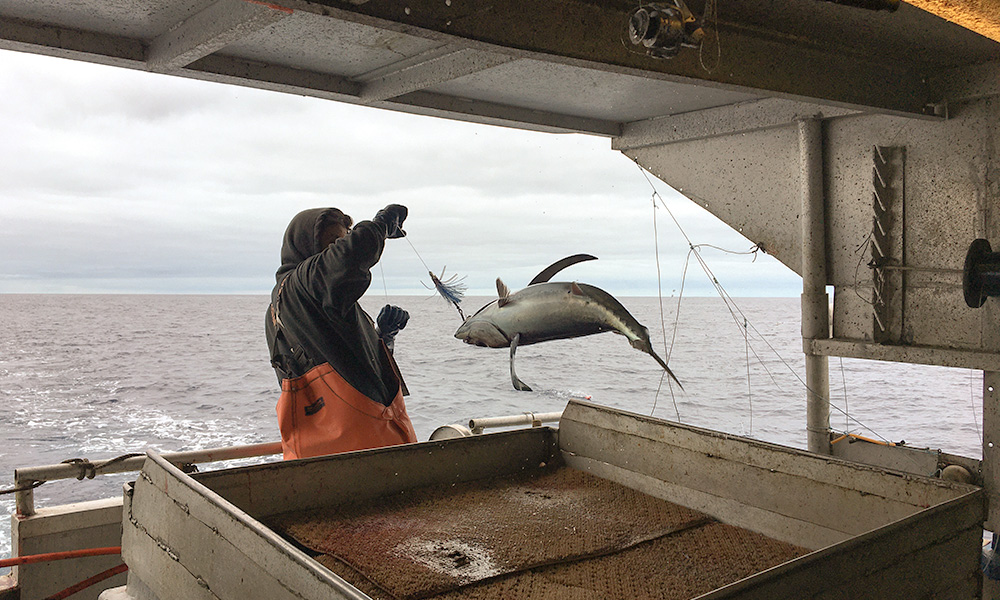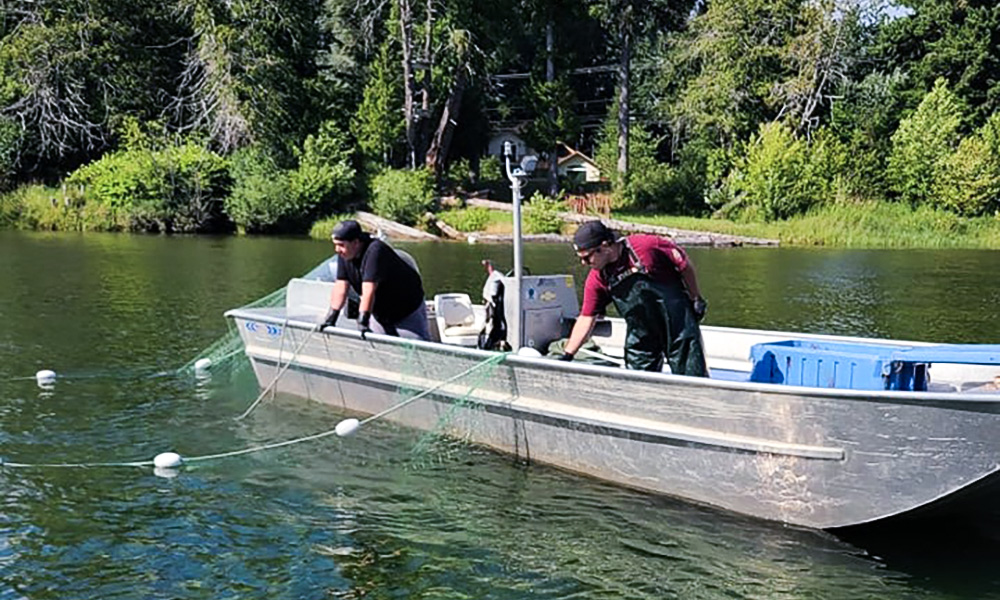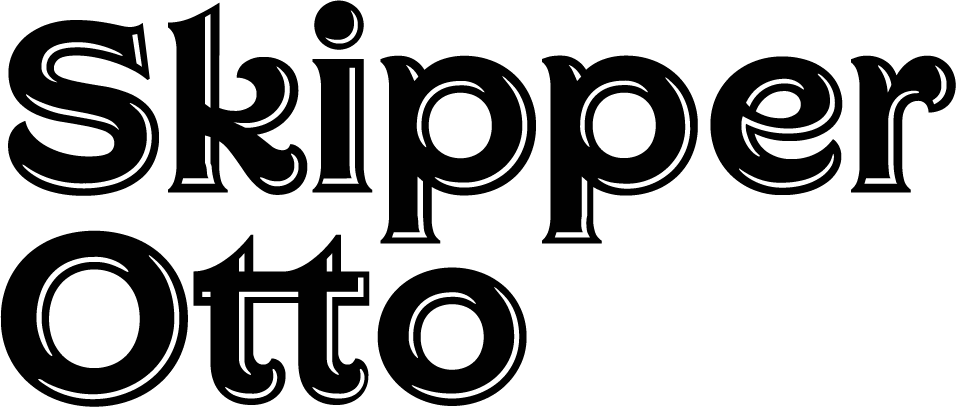Especially since the release of the film “Seaspiracy,” we’ve been seeing a lot more public awareness about the environmental impacts of fishing, and questions about the possibility of sustainable seafood. It’s certainly never been a secret that the global industrial seafood system is harming the marine ecosystem. Margins are thin, prices are unpredictable, and corporations are trying to make a profit by any means necessary. This leads to the use of ocean-ravaging fishing practices, overfishing, and the production of massive amounts of waste, including ghost gear. These issues are actually a big part of the reason Skipper Otto Community Supported Fishery was founded – to create a seafood system that works for fishers, seafood lovers, coastal communities, and marine ecosystems. Read on to see some of the ways the Skipper Otto model addresses the social and environmental injustices built in to the global industrial seafood system.
What Makes Skipper Otto Different?
First, it’s worth noting that the global industrial seafood system is functioning as it is meant to. In this system, the only thing that matters is generating a profit for company shareholders. The cost to people and the marine environment is rarely taken into account. The ocean is seen as a resource to exploit, and fish as a commodity to be sold on the market.
On the other hand, there is no one more committed to keeping marine ecosystems functioning and healthy than an independent fisher. Our fishing families take part in some of the most well-managed fisheries in the world. Their livelihood depends on there being fish to catch year after year, and ensure their children and grandchildren can continue their traditional way of life for generations to come.
Sustainable Seafood Fishing Methods
Take fishing methods for example. Bottom trawling is a commonly used method of fishing in industrial-scale fisheries in unregulated international waters where a net is dragged along the ocean floor, scooping up everything in its path. Not only does this result in a lot of “bycatch” –– fish or other marine creatures caught in the nets that are not the intended catch –– it also destroys fragile habitats and disrupts ecosystems.
Small-scale, independent fishing families know that their income is dependent on a healthy marine ecosystem. They use the same low-impact fishing methods that their families have used for generations. We only offer seafood to our members that was harvested in tightly-regulated in-shore Canadian fisheries using methods that are closely monitored by live, on-board monitors, cameras, and quotas.

Bycatch is also much easier to handle for small-scale fishing families than it is for massive factory vessels. It is minimized in the first place using highly targeted gear and methods, but if unwanted fish are caught, they can often be released without harm.
Some bycatch also turns out to be a perfectly good product on its own, and allowable bycatch is often integrated into fisheries management plans and Ocean Wise recommended. For example, our pink salmon and rockfish are all caught mostly as bycatch, and we’re happy to pay our fishing families a fair price for these species. This is what it means to “eat with the ecosystem:” our fishing families harvest what is seasonal, sustainable, and abundant, and our members get to try varieties of seafood they may never have encountered in the supermarket.
Plastic Pollution and Ghost Gear
The plastic pollution created by lost fishing gear is another huge problem. In industrial fishing, massive gear is often dragged along the seafloor or left anchored for days or weeks on the high seas with the intention to return later to harvest whatever has become ensnared. Sometimes gear is lost in storms or abandoned, and these nets, lines, buoys, and other gear become “ghost gear” –– loose gear floating at sea that can entangle pretty much any sea creature unlucky enough to come across them, restricting their movement, leading to starvation, injury, infection, and/or suffocation. It’s estimated that tens of thousands of tonnes of ghost gear are generated each year, and these nets take years and years to degrade.
By contrast, the nets and lines used by the small-scale fleet in BC are not left behind for long periods of time. By law, all in-shore BC fisheries have maximum “soak times” and gear must be properly labelled. In gillnet salmon fishing, for example, nets cannot be left unattended and must be pulled back on board every 20 to 90 minutes. Fishing gear is a significant investment for fishing families. In addition to being illegal and punishable by steep fines and even loss of fishing licenses, it’s not in their interest — for environmental nor financial reasons — for fishing families to abandon their expensive gear. Anytime gear gets tangled or damaged, fishing comes to an immediate halt and everything is pulled aboard to be repaired on shore. Fishing families spend hours meticulously cleaning and mending their equipment, nets included. And, truth be told, small-scale fishermen pull in far more plastic and trash from the oceans each day when they are out at sea than they will ever leave behind.
We Have Our Own Sustainable Seafood Researcher
At Skipper Otto, we don’t just rely on the Department of Fisheries and Oceans or certification systems like Ocean Wise to tell us what seafood options are sustainable. We use their data as a minimum starting point but when you’re buying directly from small-scale fisheries families it’s not always that simple. That’s why we have a sustainable fisheries researcher on the team! Each season, Jeff Scott considers the data available through DFO and certifying and monitoring organizations like Sea Choice, MSC, and Ocean Wise, but he also looks to First Nations, university researchers, and environmental organizations, to make sure we’re leveraging the most sustainable options in real time. Jeff updates our sustainable seafood sourcing guides yearly, and shares them with our members so they know exactly what fish we expect to have available and why it’s a sustainable sustainable choice that year. We take the time to explainwhat’s going on. It’s more of what we call “eating with the ecosystem” — offering only what is locally, seasonally, and environmentally abundant and the best choice to eat in any given year and explaining why it is so. 
So How Can You Be Sure You’re Getting Sustainable Seafood?
Ultimately, we think that consumers should have the right to know exactly how the products you’re purchasing are harvested or produced. Who the fishers are, what gear and methods they employed to bring you their catch, and even where and when they caught it, are all details you have the right to know when deciding if you want seafood to be part of your diet. If you don’t know these details, you don’t know what kind of system you’re supporting.
Allison Hepworth - April 29, 2022





